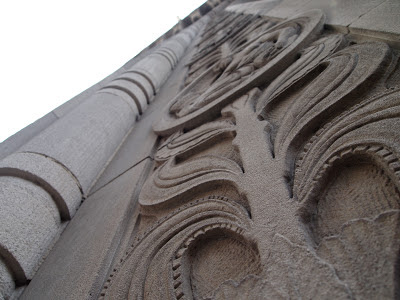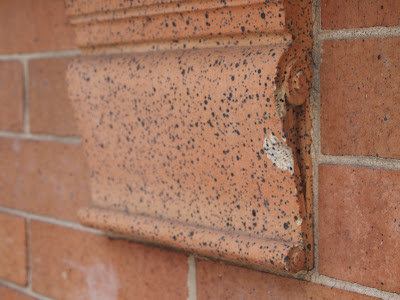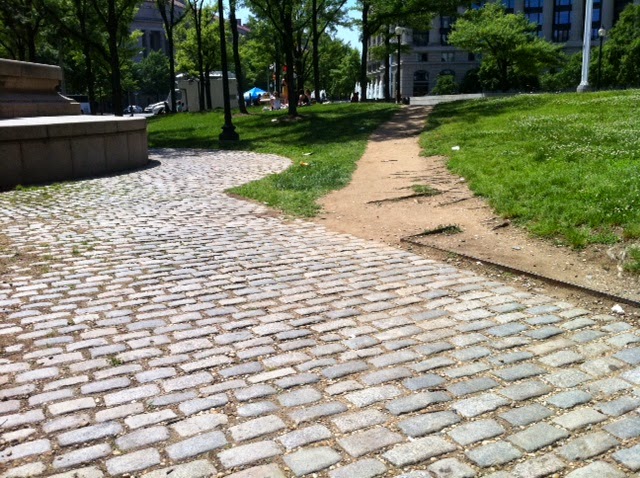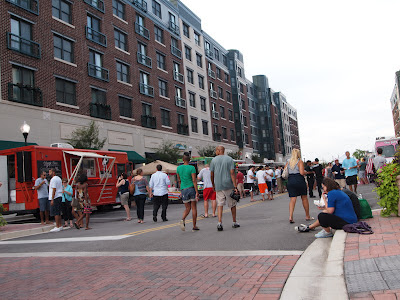Urban-Musing
Preface: The origin of this Blog was an architecture school seminar; Social Aspect of Urban Form, NYC. Which examined New York City’ settlement patterns, spatial intricacies and vibrant public spaces to assess the influence of the built environment on behavioral activity and social engagement in the urban realm. From this point I have aimed to broaden the scope to document and survey other metropolitan regions and urban dynamics.
Monday, April 21, 2014
Monday, September 30, 2013
Architecture, Nostalgia and Traces
The
vicissitudes and pathos of the build environment are chronicled by traces, -
remnants incised by time-honored spatial efficacy and material tenacity.
This host
of geometric traces strewn along our urban landscape are suffused with insight
and adorned by nostalgia.
Often, they seem effaced by their disassembled past, yet, in truth, they are beholden to this subtractive precept for their significance as a mnemonic devices and unlikely ornament.
Consequently, the artless embellishment attains, paradoxically, an enviable standing.
A distinction the architectural form aspires to, but, can never entirely inhabit – the attribute of being ‘art for art’s sake.’
Because unrestrained by the pragmatic convention of architecture, traces skillfully engender a perceptual consciousness for the discerning passerby. They formulate a narrative in which the viewer posits, deconstructs, and assembles, the critical association between culture and its architectural devices. Their prosaic outlines serving as the building block of idealized precedents, a time when neighborly voices exchanged pleasantries before exalted façades, and affable fenestrations were arranged along an unblemished axis of conceit, just prior to becoming the progeny of erasure, and an enduring witness, so gallantly positioned for the vanity of nothingness.
Wednesday, April 24, 2013
Relics of the Pedestrian Age
In an era when an ordinary stroll down main street meant
subjecting your footwear to some of the most distasteful aspects of city
living, these metal contraptions provided a physical, and perhaps psychological means to eliminate the aberrant socio-natural environments outdoors, from the
pulchritude and civility occurring indoors. Considering their practical application boot-scrapers were often adorned with quaint motifs
inspired by flora or fauna. Along some neighborhoods they are matching, and unifying
element of the streetscape, comparable to stoops, doors, planting and awnings.
Whereas some traditions encourage removal of ones footwear
altogether - in order minimize the transgressive elements of the sullied
outdoors, 19th century urbanites in the west opted for a faster, socially
acceptable alternative.
 |
|
The most elaborate ‘scrapers’ closely match the brazenness
of the building’s façade and address.
|
Paradoxically, it was the conquest of the urban landscape by
the motor vehicle, which prompted improvement to city streets and boulevards. Ultimately,
the humble boot-scaper became an anachronistic artifact of the cityscapes.
Friday, February 8, 2013
Thursday, January 3, 2013
In Defense of Ornament
“We arrange around us material forms which communicate to us what we need - but are at constant risk of forgetting we need... " Alain de Botton, The architecture of Happiness.
 |
| Acute ornamental deficiency |
If only the jetpack commuter of the 21st century
were a stunning reality today, then indeed, _Ornament and craft in our
surroundings could be regard with derision.
Yet, here we are - 2013, and we’re still confined to a sluggish
planar existence of sidewalks and streets. Fortunately, with increased
appreciation by designers and planners that a livable city is comprised of
suitable, dignified and pleasing pedestrian realms, it’s , therefore fiting at
this juncture to reconsider the visual austerity and monotony, which mid-century
architecture enfolded considerable portion of our pedestrian sphere. Adage such as; Less is More and Ornament is
Crime, inspired a reductive, even dehumanizing aesthetic which came to dominate
the “modernized” quarters of cities. To some extent, these conditions were and
remain, largely, a response to the preeminence of private automobiles and the difficulties
of storing so much steel and rubber; nonetheless, a renaissance of walkable cities
should herald a responsive architectonics suited to a bipedal creature which posssesses an
inherent penchant for stimulating environments.
 |
|
Even before permanent settlements or the concept of a built
environment, there’s been a longing to replicate aspects of the natural or
dream worlds in our surroundings.
|
 |
|
Alongside the Classical Orders, architectural aesthetics
have made extensive use of a variety of flora and fauna motifs. |
 |
|
No funtional application - a diminutive scroll pattern for the amusement of the keen
passersby
|
Monday, October 1, 2012
The Food Truck Revolution
Along with the almost limitless
gastronomic array, food trucks often turn sidewalks, plazas, parks and even
vacant lots into veritable social events.
Food trucks present a spirited
pedestrians realm and an indispensable third- place, with a possible
socio/ecological advantage to brisk and mortar eatery: reducing the number of
motorist traveling across town, especially during lunch hour. In addition, this
approach to lunchtime may curtail the endless lines of idling cars waiting for
a turn at the drive-thru window.
Most of these mobile cafeterias take advantage of social sites, like Facebook and Twitter to maximize turnout at there upcoming locations. Some trucks encourage followers to vote on prospective locations for upcoming appearances. This is a new take on one fast-food giant’s adage: ‘…have it your way.’
Beside the current spike in gas
prices and the perpetual parking frustrations, there seem to be an element of nostalgia
to explain the precipitous growth of this food truck revolution. Perhaps, as a
society we are yearning for a simpler time, - a bygone époque when some food
staples were delivered to our doorsteps, or probably a personal childhood memory,
in which the cacophony of the ice-cream truck engender a type of neighborhood-wide
hysteria.
Thursday, August 2, 2012
Typical Summer Affair in the City
Often the city’s environment, encircled by inert–manmade
materials and multifaceted infrastructure, makes us perceive it as rigid,
unyielding, - a somewhat indestructible objects of social organization. However,
at its basic level, urban environs display attributes of an organic nature,
such as; growth, decay, and sometimes regeneration. And the summer months accentuate both the
vulnerability and malleability of our metropolitan environment, given the
variety of project undertaken on infrastructure. Certainly, these interventions
add additional aggravations, in the way of noise and air pollution, not to
mention impediments to vehicular and pedestrian circulation, however, these
are, in most instances, vital component in maintaining this artifact of
civilization we call cities, as functional/well-oiled machines.
 |
| sometimes aging infrastructure is to blame. Baltimore, MD -water main brake |
 |
| Re-design and upkeep @ Union Station, Washington,D.C. |
 |
| ? |
 |
| Orange is deffinetly the "it' color for city landscapes |
Subscribe to:
Comments (Atom)


















.JPG)



























